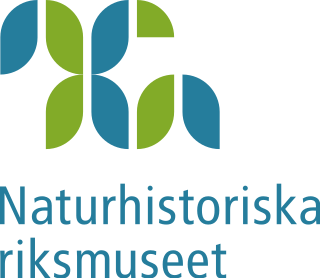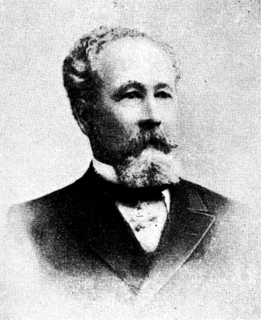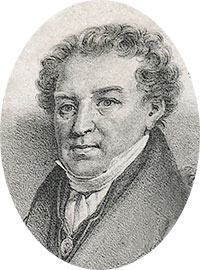
Anders Angerstein (1614-1659), also called Andrae Angerstein, was a German-Swedish ironmaster.

Anders Angerstein (1614-1659), also called Andrae Angerstein, was a German-Swedish ironmaster.
Anders Angerstein is said to have been born in de:Angerstein (Nörten-Hardenberg), Niedersachsen, Holy Roman Empire, [1] with evidence indicating ultimate family origins in Hungary. [2] He immigrated to Sweden along with accompanying miners, first in service of other equally immigrated ironmasters but with time settling by the Angerstein forge in Vikmanshyttan, Dalarna. [3] Anders Angerstein was married to Anna Katarina Domb. Among his issue was Johan Angerstein.
With craft production authorisation by the Swedish Board of Mines [3] the holdings were extended, subsequently including Vira bruk, Thurbo, and Bispberg, inter alia, [4] remaining in the family until the 19th century. Anders Angerstein is noted for improvements for charcoal piles during his tenure.
In 1981, the former Angerstein steelworks of which he laid the foundation were transformed into the Steelworks Museum of Vikmanshyttan, maintained as a museum of regional industrial history.

This is a list of governors for Stockholm County of Sweden. Stockholm County separated from Uppland County, the first time from 1641 to 1654, and then finally in 1719. The City of Stockholm was separately governed by the Governor of Stockholm until 1967, when it was integrated into Stockholm County. The governors reside in Tessin Palace.
The Governor of Stockholm was the head of the Office of the Governor of Stockholm, and as such he was the highest Swedish State official overseeing the affairs in the City of Stockholm between 1634 and 1967. The Governor was the equivalent in Stockholm of a county governor elsewhere in Sweden.

Christopher Polhammar better known as Christopher Polhem, which he took after his ennoblement in 1716, was a Swedish scientist, inventor and industrialist. He made significant contributions to the economic and industrial development of Sweden, particularly mining. He was ennobled by King Charles XII of Sweden for his contributions to Swedish technological development.

Samuel Troilius was Archbishop of Uppsala from 1758 to his death.

The Swedish Royal Museum of Natural History, in Stockholm, is one of two major museums of natural history in Sweden, the other one being located in Gothenburg.

Ernst Abraham Josephson (1851-1906) was a Swedish painter and poet. He specialized in portraits, genre scenes of folklife and folklore.

Johan August Malmström was a Swedish painter. As an artist, he was known for his country motifs often featuring children. His most widely recognized work is Grindslanten (1885) featuring a typical scene from 19th century Sweden. Influenced by the national romanticism of Gothicismus, he also collected motives from Norse mythology. He made illustrations for publications of both Frithiofs saga and The Tales of Ensign Stål.

Helgo Nikolaus Zettervall, older spelling Zetterwall, was a Swedish architect and professor of the Royal Swedish Academy of Arts. He is best known for his drastic restorations of churches and other buildings around Sweden.

Lars Gathenhielm (1689–1718) was a Swedish captain, commander, shipowner merchant, and privateer.

Vikmanshyttan is a locality situated in Hedemora Municipality, Dalarna County, Sweden with 843 inhabitants in 2010. On site the Steelworks Museum of Vikmanshyttan is maintained as a museum of regional industrial history.

Kronovall Castle is a chateau in Tomelilla Municipality, Scania, Sweden. Today there is a hotel, restaurant, wine café and conference rooms operated on site.

Carl Ludvig Trägårdh was a Swedish painter.

The Thiel Gallery is an art museum in the Djurgården park area of Stockholm, Sweden. Represented are the members of the Artists Association (Konstnärsförbundet) from the early 1900s as well as one of the world's largest collections of works by Edvard Munch.

Carl Johan Fahlcrantz was a Swedish painter.

The Grill family are noted for their contribution to the Swedish iron industry and for exports of iron and copper during the 18th century. Starting as silversmiths and experts on noble metals the Grills became engaged in a wide range of businesses. After 1700 the family began its rise to prominence. They owned ironworks, while operating wharves, and importing material related to shipbuilding. The Grills benefited from mercantilist policy. With a positive balance on their account the Grills became engaged in banking, also in the Dutch Republic; around 1720 in the market for government liabilities and then mediating large credits and clearing international bills of exchange. The Grills had significant influence with the Swedish East India Company (SOIC); three members became directors of the SOIC and the Grill firm traded as members of the SOIC and privately.

Harriet Sundström, was a Swedish landscape artist.

Angerstein is a German-Swedish family from Angerstein, Niedersachsen, Holy Roman Empire, with indications of ultimate origins from Hungary.